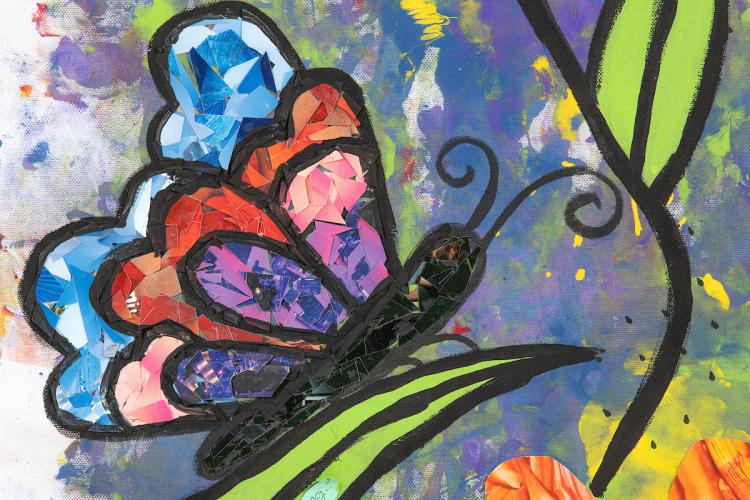

The OHIO Women’s Center is partnering with the Survivor Advocacy Program , University Health Promotion , Ohio University Art Galleries , Ohio University Alumni Association , Department of Geography , and with support from Counseling and Psychological Services to host a closing reception on Sept. 8 for its arts-based “In This Space: Disrupted” exhibit in the Baker University Center ’s Trisolini Gallery .
Two contributors will be featured speakers at the reception, as well as OHIO President Dr. Hugh Sherman.
The annual exhibit, which debuted on Aug. 24 this year, provides a platform for survivors of sexual assault to share their experiences and sheds light on the stories behind the statistics. The exhibit, which was also available to tour online , features 14 large panels to bring awareness to and prevent incidents of interpersonal violence while creating a culture of support and healing for survivors.
“Since 2017, the Women’s Center and our collaborative partners have hosted survivor center art installations. It started with the Monument Quilt, which was a national exhibit with over 2,000 quilted squares about survivors,” said Dr. M. Geneva Murray, director of the Ohio University Women’s Center. “In 2019 and 2020 we had ‘Through the Survivors’ Lens’ and ‘In this Space: Disrupted,’ which are exhibits unique to Ohio University.”
Among undergraduate students on college campuses nationwide, more than 23 percent of women and over 5 percent of men report having experienced rape or sexual assault through physical force, violence or incapacitation, according to the Rape, Abuse and Incest National Network (RAINN).
The exhibit is timed to coincide with the “Red Zone,” the first six to eight weeks of fall semester when reports of sexual assault on college campuses across the nation tend to spike. According to RAINN, more than 50 percent of college sexual assaults occur from August through November.
“In This Space: Disrupted” examines the geography of space, Murray said, and challenges the myths that many people may have about survivors.
“There seems to be a singular narrative that we hear about interpersonal violence that sexual assault occurs in dark alleys by strangers. While that may be true, when we only say that it limits and diminishes the experiences of other survivors,” Murray said. “Nine out of 10 times the survivor knows the perpetrator. So when we tell survivors to walk with friends and that will keep them safe, that ignores the fact that sometimes it is the friend who is the perpetrator. We want to uplift all of the diversity of experiences for survivors.”
Works featured in the exhibit spotlight the issue of unsafe spaces and how we can create safer communities.
These exhibits have also been academic enrichment experiences for OHIO students studying the arts, who have helped set up and curate the displays, and those in the campus’ learning communities, who have also helped install the exhibits.
“For all survivors, we want them to know that we hear them, and we value their experiences, and we want them to connect to resources that maybe they didn’t have access to before. The Survivor Advocacy Program will work with survivors if they have been assaulted on campus or before coming to campus,” Murray said.
The “In This Space: Disrupted” exhibit will be available for in-person viewing at Baker University Center’s Trisolini Gallery through Sept. 18. The special reception will be held Sept. 8, from 6 to 8 p.m. in the gallery space. The reception is free, and everyone in the University community is welcome to attend.

